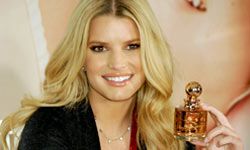Chanel's "Coco" eau de toilette costs $68 for 1.7 ounces. For the same volume, "Coco" eau de parfum goes for $85. "Coco" parfum, meanwhile, costs $105 for just 0.25 ounces.
What's the difference, aside from price?
Advertisement
That collection of similarly pretty bottles on perfume shelves is in fact a fairly varied group of products. Names like "eau de cologne" and "eau de parfum" are not just fancy ways of saying "perfume." Perfume is, like the other designations, a specific version of a scent.
There was a time when the perfume formulation was the only version of a scent. Perfume was for the elite, those who could afford the price of the pure essential oils that, along with alcohol, make up a fragrance. But around the start of the 1900s, perfume houses started mass-marketing variations of their expensive scents to satisfy a different, much larger market.
Now, we see bottles of eau de cologne, eau de toilette, eau de parfum and perfume (or parfum) -- and most of us aren't entirely sure what we're choosing between. Is it about how they smell? Whom they're made for? How they're applied?
Sort of -- but there's a far more basic difference. It has to do with concentration, or the percentage of fragrance oils in the liquid. The tricky thing is that the concentration doesn't only affect strength.
Eau de cologne, for one, which (surprise!) is not in fact a gender-specific format, can actually smell different from a perfume version of the same scent.
Advertisement


